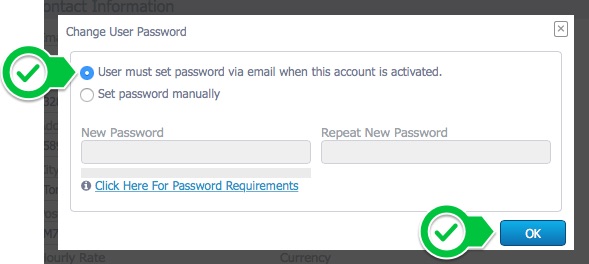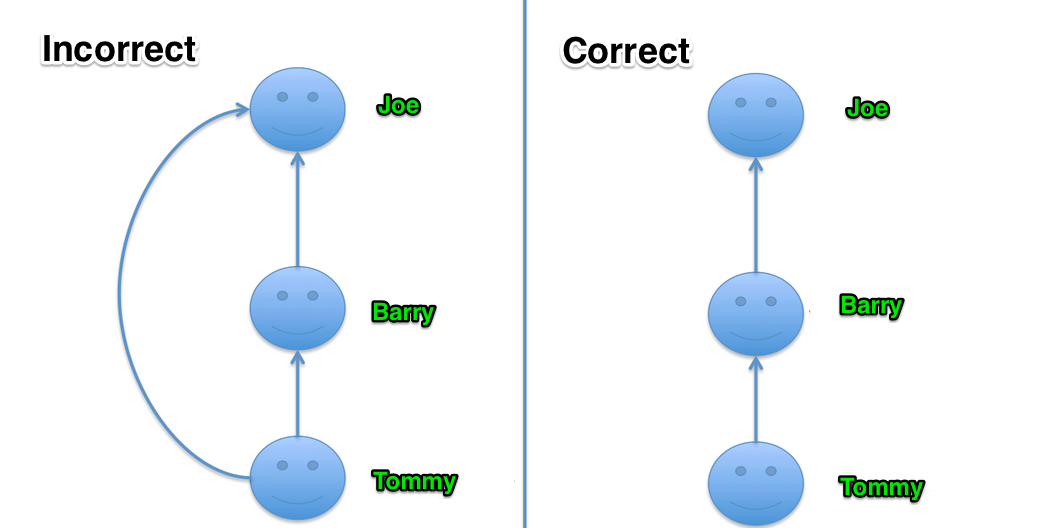Step 2: Add New Users
Overview
T here are two types of users in the CMMS, Active and Inactive users. Active users can login to the CMMS. Inactive Users Cannot login to the CMMS . There is no difference when setting up active and inactive user accounts. When it comes to adding users, you will need to ensure you have vacant seats available. If you do not have any vacant seats, you can add more by following the procedure outlined here .
1. To create a new User navigate to Settings, Users and click New
2. If you have multi-site enabled you will have to choose which site you want to assign your new user to. You can add the user to more sites later on. In this example we will add the new user to the New York HQ site.
1. Account Tab
Under the Account tab, fill in the information for the new User. The most important information is the Username, Email address, and Password . This information is used to identify the User, and to gain access to the CMMS.
- When choosing the Password, you need to ensure that it meets the required standards. The password strength checker below the password field will show when your password is acceptable. For more information on choosing a secure password click here
- The Personnel Code is a unique identifier assigned to each User. This is automatically generated for each new User (optional)
- The Title is the Users job title (optional)
- The Hourly Rate is used to calculate labor costs for Work Orders (recommended). The user work order labor hours are multiplied by the hourly rate to determine labor costs.
- The Telephone is the User phone number (optional)
- The Default Login Location defines what page the user will see first when they login. There are 4 options to choose from here.
- Set the Language for the user.
- Insert the Users Name under Login & Account Controls (mandatory)
1. To manage the password setup, and activate the user, click on the Inactive button.
Note: Activating the user allows the user to login. Inactive users cannot login to the CMMS.
2. Here you can set up the user password manually, or have the user set their password via email when their account is activated.
2a. To set a password manually, enter a New Password, Repeat New Password, and click OK

Click Click Here For Password Requirements for details on Password Requirements

2b. To have the user set their own password, select User must set password via email when this account is activated, and click OK

2. User Groups / Sites & User Groups
1. The User Groups tab allows you to decide which user groups the user is assigned to. User groups also determine the user permissions. For users with the multi-site functionality switched on, this tab it's called Sites & User Groups . To add the user to a new user group, click New .
2. Select the site from the dropdown menu, a user group, and click OK .
3. The users Sites & User Groups will now be displayed in the user's account as shown below.
You can add users to as many User Groups (or Sites) as you please.
Note:- To add a user to the administrators group you will have to add the user to No Sites
3. Reports To
1. The Reports To tab is where you define who the user reports/answers to. To begin, click Reports To , and, New
2. Use the dropdown to select who the user reports to, and click OK

3. Once selected, this information will be displayed as below.
Note:- When adding information about who the user reports to it is important not to break the hierarchy as shown below. The CMMS operates best with a straight line hierarchy. Please see diagram below.

In the example above Barry reports to Joe, while Tommy Reports to Barry. As such, there is no need for the direct link from Tommy to Joe as Tommy reports to Joe through Barry. It is important to respect the hierarchical structure when setting up users on your CMMS, as a failure to do so can lead to issues when viewing Work Orders assigned to 'Me and users reporting to me'.
4. Messaging
When users get assigned to work orders, they will receive the emails as set in the notifications tab of the work order. The Messaging tab on the user record works differently. This determines what work order notifications the user receives based on their asset assignment. For example, a user is not assigned to the work, but receives a notification as they are assigned to the asset in the department that they manage.
1. Select the Messaging tab .
Email Messages And Alerts:
- Email All Messages: An email is sent to the user’s external email account like gmail, outlook, hotmail etc. To stop email notifications being sent to your external account, uncheck the checkbox and select Save from the right hand side of the browser window.
- Internal Email All Messages – An email is sent to the users CMMS account. Internal email messages are viewed by signing in and selecting Notifications
- Push Notification Messages: A notification is sent to the users mobile device, for active work orders, that the user is assigned to. The user must be logged into the mobile application, and be connected to the internet to receive notifications.
Work Orders and Work Request:
In this section, the user can select what type of emails they choose to receive, regarding any status changes to work orders or work requests.
....For the following Assets:
This determines which assets you receive those notifications on. Plant managers may want notifications on All Assets, technicians would be more interested on the assets they are assigned to.
All assets: The user receives notifications for all assets at your site in the CMMS
- Assets that I am Assigned to: The user receives notifications for the assets that they are assigned to. The user must be added to the personnel tab of the asset (ideal for larger companies)
- Assets in the Facilities that I manage: The user receives notifications for their assigned asset, and all assets below it in the asset hierarchy. For example, if the user is assigned to building 1, then the user will get all of the notifications for building 1, and ever sub-asset below it in the hierarchy.
- Also, notify me of the work orders without an asset: The user will receive messages for work orders without an assigned asset.
Work orders created from scheduled maintenance:
When an asset has a work order for a scheduled maintenance opened against it, then the CMMS does not trigger a second work order. The user can choose to receive a notification when this event occurs.
5. Files Tab
1. The Files tab works the same as with the Files tab on work orders. You can drag and drop files which will be stored in the user's files tab. In this example, you will find an attached photo which will then be displayed in the user's account.
6. Certifications
1. To add user certifications click Certifications, and New .
2. Add a Name, select a C ertification, add a Description, select a time period, and click OK.
Note: New certifications can be added through the Lookup Tables.
3. The certification will now be displayed.
7. Business
The business tab is used to define the user as a business contact for a specific business. To link the business to the user, click Business, and New .
8. Log
1. The Log tab lists any work orders, or assets assigned to the user.
Related Articles
ZenduMA- Setting up new users on standalone platform
This article explains how to set up new users in ZenduMaintenance: There are two types of users in the CMMS, Active and Inactive users. Active users can login to the CMMS. Inactive Users Cannot login to the CMMS. There is no difference when setting ...Using ZenduONE Reports: Features & Functionalities
Intended Audience: This guide is for ZenduONE users—fleet managers, operations staff, and administrators—who want a comprehensive, step-by-step walkthrough to create, customize, manage, and utilize reports within the ZenduONE Reports Module. What ...Adding Meter Readings on Mobile
Overview This procedure demonstrates how to add a meter reading to an asset. Meter readings can be added to the Locations/Facilities, Equipment, Tools, and Work Order modules. The steps to follow are identical for all four modules. Steps: 1. Open a ...Adding a New Business on Mobile
Overview This procedure demonstrates how to add a new business using the mobile app. Steps: 1. Select Businesses 2. Press the Add button 3. Fill in the Business information, and press Save to complete 4. Your new business will now be available ...Step 6: Add Parts & Supplies
Overview This procedure will go through the Parts and Supplies module. It will cover basic set-up, and explain each of the parts and supplies tabs. 1. To begin, select Supplies, Parts and Supplies, and click New Stock 2. The following information ...